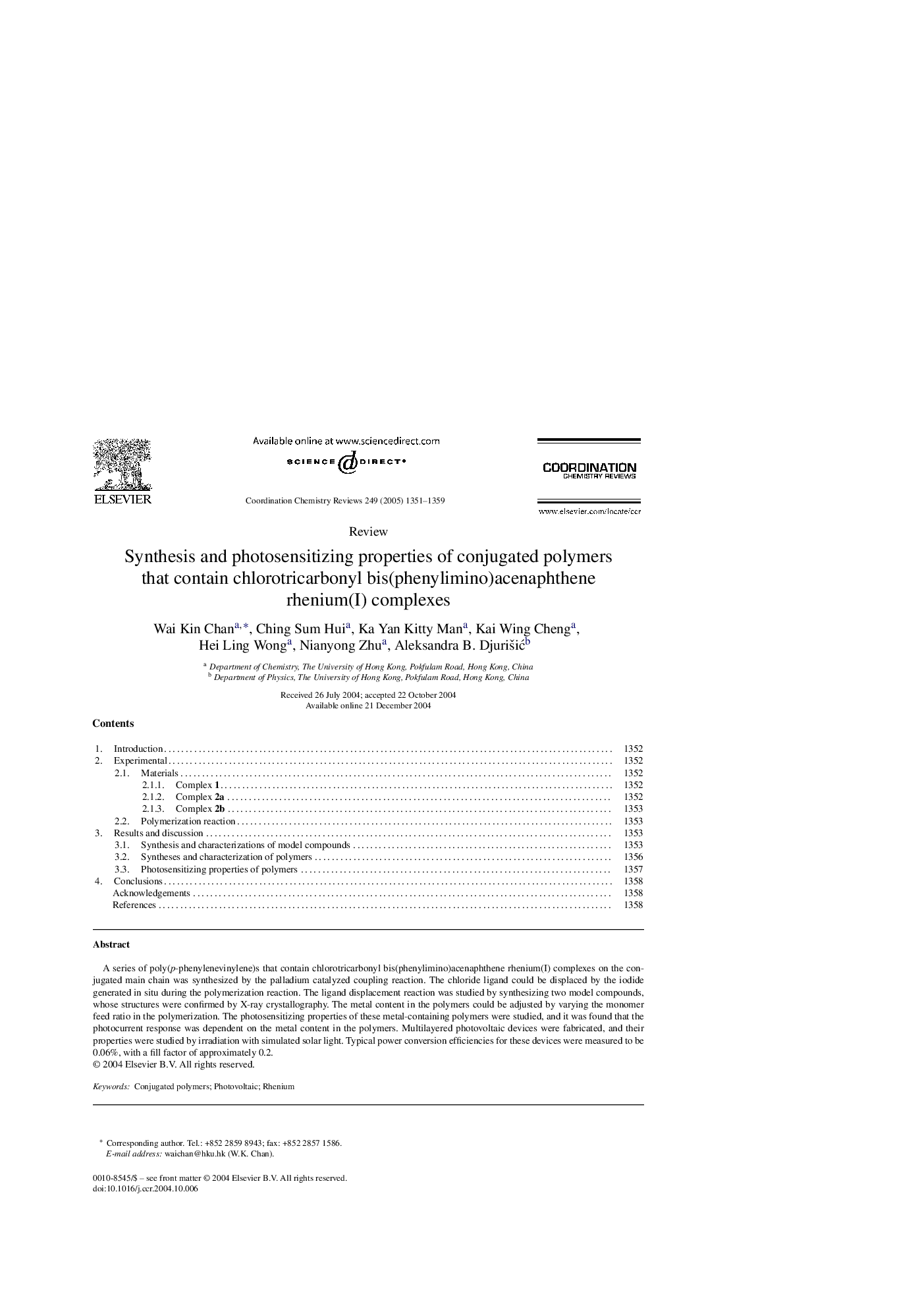| Article ID | Journal | Published Year | Pages | File Type |
|---|---|---|---|---|
| 9763695 | Coordination Chemistry Reviews | 2005 | 9 Pages |
Abstract
A series of poly(p-phenylenevinylene)s that contain chlorotricarbonyl bis(phenylimino)acenaphthene rhenium(I) complexes on the conjugated main chain was synthesized by the palladium catalyzed coupling reaction. The chloride ligand could be displaced by the iodide generated in situ during the polymerization reaction. The ligand displacement reaction was studied by synthesizing two model compounds, whose structures were confirmed by X-ray crystallography. The metal content in the polymers could be adjusted by varying the monomer feed ratio in the polymerization. The photosensitizing properties of these metal-containing polymers were studied, and it was found that the photocurrent response was dependent on the metal content in the polymers. Multilayered photovoltaic devices were fabricated, and their properties were studied by irradiation with simulated solar light. Typical power conversion efficiencies for these devices were measured to be 0.06%, with a fill factor of approximately 0.2.
Related Topics
Physical Sciences and Engineering
Chemistry
Inorganic Chemistry
Authors
Wai Kin Chan, Ching Sum Hui, Ka Yan Kitty Man, Kai Wing Cheng, Hei Ling Wong, Nianyong Zhu, Aleksandra B. DjuriÅ¡iÄ,
